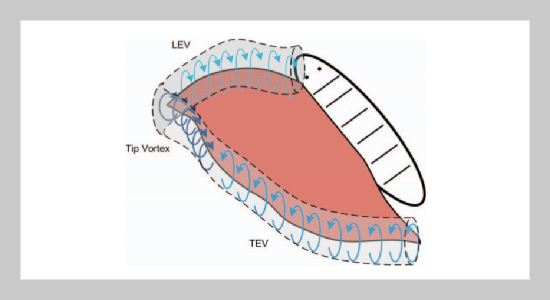REFERENCES
- [1] Shyy, W., Lian, Y., Tang, J., Dragos, V. and Liu, H., Aerodynamics of Low Reynolds Number Flyers, New York: Cambridge University Press (2007). doi: 10.1017/ CBO9780511551154.003
- [2] Mueller, T. J., Fixed and Flapping Wing Aerodynamics for Micro Air Vehicle Applications, AIAA. Progress in Astronautics and Aeronautics (Book 195), Reston, VA2001 (2001).
- [3] Ma, K. Y., Chirarattananon, P., Fuller, S. B. and Wood, R. J., “Controlled Flight of a Biologically Inspired, Insect Scale Robot,” Science, Vol. 340, pp. 603�307 (2013). doi: 10.1126/science.1231806
- [4] Ma, K. Y., Felton, S. M. and Wood, R. J., “Design, Fabrication and Modeling of The Split Actuator Microrobotic Bee,” Proc IEEE Int Robotics and Automation Conference, St. Paul, MN2012, pp. 1133�1140 (2012). doi: 10.1109/IROS.2012.6386192
- [5] de Croon, G. C., Groen, M. A., Wagter, C. D., Remes, B., Ruijsink, R. and van Oudheusden, B. W., “Design, Aerodynamics and Autonomy of the DelFly,” Bioinspiration and Biomimetics, Vol. 7, No. 2. doi: 10.1088/ 1748-3182/7/2/025003
- [6] Inc F. SmartBird http://www.festo.com/net/Support Portal/Files/46270/Festo_SmartBird_en.pdf2011 [cited 2015 8th August].
- [7] Inc F. eMotionButterflies http://www.festo.com.cn/net/ SupportPortal/Files/367913/Festo_eMotionButter flies_en.pdf2015 [cited 2015 8th August].
- [8] Grauer, J. A. and Hubbard, J. E. J., Editors, “A Multibody Model of an Ornithopter,” Proceedings of the 47th Aerospace Sciences Meeting Including the New Horizons Forum and Aerospace Exposition, Orlando, FL: AIAA (2009). doi: 10.2514/6.2009-727
- [9] Bermudez, F. G. and Fearing, R., “Optical Flow on a Flapping Wing Robot,” IEEE International Conference Intelligent Robots and Systems, St. Louis, MO2009 (2009). doi: 10.1109/IROS.2009.5354337
- [10] Chen, L.-S., Chen, B.-H., Wang, Z.-J. and Lin, P.-C., Design and Manufacturing of a Butterfly Robot, International Conference on Advanced Robotics and Intelligent Systems, Taipei (2015).
- [11] Tanaka, H., Matsumoto, K. and Shimoyama, I., Design and Performance of Micromolded Plastic Butterfly Wings on Butterfly Ornithopter, IEEE/RSJ International Conference on Intelligent Robots and Systems; Acropolis Convention Center, Nice, France, pp. 3095� 3100 (2008). doi: 10.1109/IROS.2008.4651065
- [12] Kovac, M., Vogt, D., DIthier, A., Smith, M. and Wood, R., Aerodynamic Evaluation of Four Butterfly Species for the Design of Flapping-gliding Robotic Insects, IEEE/RSJ International Conference on Intelligent Robots and Systems, Vilamoura (2012). doi: 10.1109/ IROS.2012.6385453
- [13] Dudley, R., The Biomechanics of Insect Flight: form, Function, Evolution, Princeton, N. J.: Princeton University Press (2000). doi: 10.1093/aesa/93.5.1195f
- [14] Azuma, A., The Biokinetics of Flying and Swimming, 2 ed. Reston, VA: American Institute of Aeronautics and Astronautics Incoporation (2006). doi: 10.2514/5.978 1600862502.0001.0014
- [15] Mountcastle, A. M. and Daniel, T. L., “Aerodynamic and Functional Consequences of Wing Compliance,” Experiments in Fluids, Vol. 46, No. 5, pp. 873�882 (2009). doi: 10.1007/s00348-008-0607-0
- [16] Sane, S. P., “The Aerodynamics of Insect Flight,” The Journal of Experimental Biology, Vol. 206, pp. 4191� 4208 (2003). doi: 10.1242/jeb.00663
- [17] Ellington, C. P. and van den Berg, C., “Willmott, A. P., Thomas, A. L. R., Leading-edge Vortices in Insect Flight,” Nature, Vol. 384, No. 6610, pp. 626�630 (1996). doi: 10.1038/384626a0
- [18] Wang, X.-B., The Influence of the Flapping Wing Motion on the Flight of Butterflies: National Taiwan University (2013).
- [19] Fei, Y. H., Yang, J. T., Enhanced Thrust and Speed Revealed in the Forward Flight of a Butterfly with Transient Body Translation, American Physical Society (2015). doi: 10.1103/PhysRevE.92.033004
- [20] Chronister, N. J., Inventor Ornithopter with Independently Controlled Wings, U.S. (2005).
- [21] Chen, L. F., Dead Leaf Butterfly Digital Teaching Resources Webpage, Education Bureau, Taichung City Government [cited 2015 Sep. 16]. Available from: http://etoe.tc.edu.tw/frs/dw/moid/526491c1f26d968d 5a000008/did/26779.
- [22] Wissa, A., Analytical Modeling and Experimental Evaluation of a Passively Morphing Ornithopter Wing: University of Maryland (2014).
- [23] Drucker, E. G. and Lauder, G. V., Locomotor Forces on a Swimming Fish: Three-dimensional Vortex Wake Dynamics Quantified Using Digital Particle Image Velocimetry, Journal of Experimental Biology, Vol. 202, No. 18, pp. 2393�2412 (1999).
















